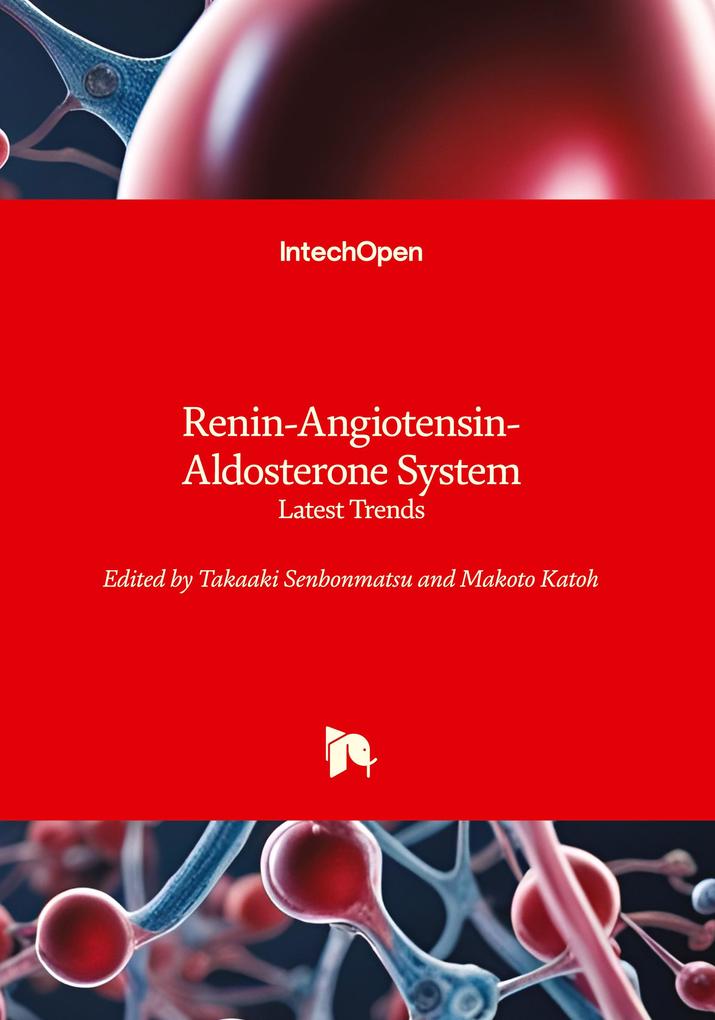
Zustellung: Mi, 21.05. - Sa, 24.05.
Versand in 1-2 Wochen
VersandkostenfreiBestellen & in Filiale abholen:
Renin-Angiotensin-Aldosterone System - Latest Trends consists of five chapters related to the renin-angiotensin-aldosterone system (RAAS). RAAS is a crucial hormonal system that regulates blood pressure, blood volume, and sodium (salt) balance in the body. When the kidneys detect abnormalities in hemodynamics, such as a drop in blood pressure or sodium concentration, renin is secreted, leading to the production of angiotensin II, which is a physiologically active substance. Angiotensin II causes cell proliferation, vasoconstriction, and sodium reabsorption through the angiotensin II type 1 receptor (AT1 receptor), helping maintain hemodynamic balance. Additionally, the AT1 receptor stimulates aldosterone secretion from the adrenal cortex. Aldosterone regulates sodium reabsorption and potassium excretion in the kidneys. Excessive activity of this system can lead to cardiovascular diseases. To address this, RAAS inhibitors such as angiotensin-converting enzyme inhibitors (ACEi), angiotensin II type 1 receptor blockers (ARB), direct renin inhibitors (DRI), and mineralocorticoid receptor antagonists (MRAs), also known as aldosterone blockers, are used to treat hypertension, heart failure, and arteriosclerosis. These therapies can be considered the "20th-century" RAAS inhibitors. In the 21st century, the discovery of the (pro)renin receptor added a new dimension to the RAAS. The physiological activation mechanism following angiotensin II has also been elucidated. While research on the (pro)renin receptor as a RAAS-independent factor with organ-crossing functions and a potential therapeutic target continues, there is still no consensus on its role as part of the RAAS. Further research is needed to explore the physiological activation mechanism following angiotensin II. This book collects the latest research on RAAS, including studies on new indicators related to angiotensin-converting enzyme, and provides valuable information on its functions.
Produktdetails
Erscheinungsdatum
16. April 2025
Sprache
englisch
Seitenanzahl
116
Herausgegeben von
Takaaki Senbonmatsu, Makoto Katoh
Verlag/Hersteller
Produktart
gebunden
Gewicht
455 g
Größe (L/B/H)
260/183/13 mm
ISBN
9780854668731
Entdecken Sie mehr
Bewertungen
0 Bewertungen
Es wurden noch keine Bewertungen abgegeben. Schreiben Sie die erste Bewertung zu "Renin-Angiotensin-Aldosterone System - Latest Trends" und helfen Sie damit anderen bei der Kaufentscheidung.









